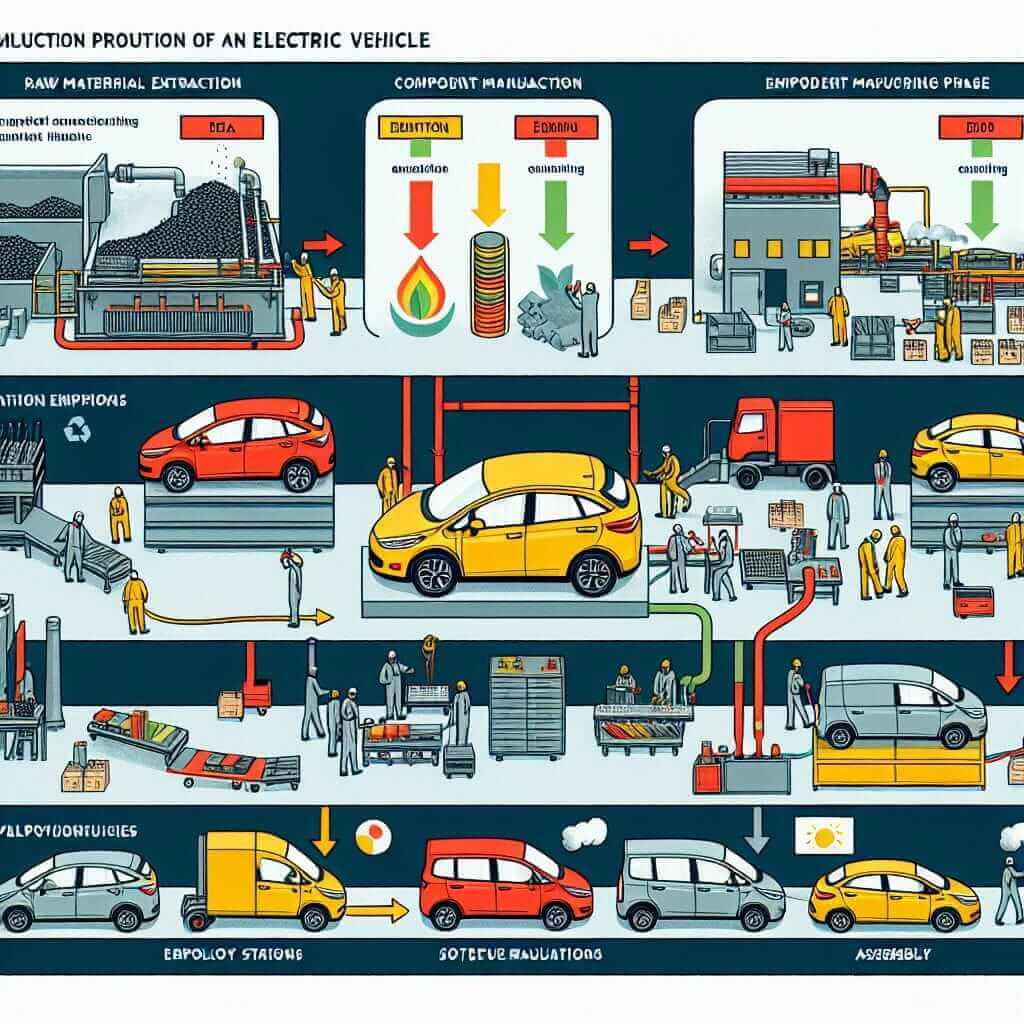The IELTS Reading section is crafted to evaluate a candidate’s ability to comprehend and analyze texts of varying complexity and styles. Topics often reflect current societal, environmental, and technological trends, offering a rich context for language practice. One such timely subject is “the environmental impacts of electric vehicle production.” Given the global shift toward sustainable transport, this theme has appeared frequently in recent exams and is likely to remain relevant in future ones.
In this article, we will explore this theme through a structured IELTS Reading practice exercise. The exercise will simulate an actual test format, provide answer keys with detailed explanations, and offer essential vocabulary and grammar pointers pertinent to the topic.
Practice Reading Test: The Environmental Impacts of Electric Vehicle Production
Reading Passage
The Environmental Impacts of Electric Vehicle Production
Electric vehicles (EVs) are heralded as a revolutionary step towards reducing greenhouse gas emissions and combating climate change. However, the production of these vehicles presents a complex array of environmental impacts that warrant careful examination.
The primary concern revolves around the significant energy consumption and resource extraction involved in manufacturing EV batteries. Lithium, cobalt, and nickel are critical elements used in battery production. Extracting these raw materials is often associated with considerable ecological disturbances. For example, lithium mining in certain regions has led to water shortages and habitat destruction, adversely affecting local ecosystems.
Moreover, the production process itself is energy-intensive. Studies have shown that the carbon footprint of manufacturing an EV, particularly its battery, typically exceeds that of a conventional gasoline-powered vehicle. This raises questions about the net environmental benefits of switching to EVs, especially when considering the entire lifecycle from production to disposal.
Secondary environmental concerns pertain to the recycling and disposal of EV batteries. Efficient recycling methods are still in their nascent stages, and improper disposal can lead to soil and water contamination due to the hazardous materials contained in the batteries. Current technological and infrastructural limitations pose significant challenges to creating a sustainable end-of-life system for EV batteries.
However, advancements in battery technology and production methods are continuously being sought to mitigate these impacts. Innovations such as solid-state batteries and improved recycling techniques promise to enhance the sustainability of EVs. Moreover, the overall reductions in tailpipe emissions and the shift towards renewable energy sources for electricity generation further strengthen the case for electric vehicles as a cornerstone of sustainable transportation.
Questions and Answers
Question Set 1: Multiple Choice
-
What is the main concern associated with electric vehicle production?
- The high cost of manufacturing EVs.
- The significant energy consumption and resource extraction involved.
- The inefficiency of electric vehicles.
- The lack of consumer interest.
-
Which raw material used in EV battery production is highlighted for causing water shortages and habitat destruction?
- Nickel
- Lithium
- Cobalt
- Aluminum
-
What is a secondary environmental concern mentioned in the text regarding EVs?
- The high initial purchase price of EVs.
- The recycling and disposal of EV batteries.
- The limited driving range of EVs.
- The aesthetic design of EVs.
Question Set 2: True/False/Not Given
-
The carbon footprint of manufacturing an EV battery is smaller than that of a gasoline-powered vehicle.
- True
- False
- Not Given
-
Efficient recycling methods for EV batteries are currently well-established.
- True
- False
- Not Given
-
Solid-state batteries are expected to reduce the environmental impacts of EV production.
- True
- False
- Not Given
Answer Key and Explanations
- B: The significant energy consumption and resource extraction involved. The passage discusses the energy and materials required to produce EV batteries as a primary environmental concern.
- B: Lithium. The passage specifically mentions that lithium mining has caused significant ecological issues such as water shortages and habitat destruction.
- B: The recycling and disposal of EV batteries. The text indicates that the improper disposal of batteries can lead to environmental contamination.
- False: The carbon footprint of manufacturing an EV battery typically exceeds that of a conventional gasoline-powered vehicle as mentioned in the passage.
- False: The passage states that efficient recycling methods are still in their nascent stages, implying that they are not yet well-established.
- True: Innovations such as solid-state batteries are promised to enhance the sustainability of EVs, according to the passage.

Common Mistakes and Tips
Common Mistakes:
- Misunderstanding the differences between primary and secondary environmental concerns.
- Confusing True/False/Not Given statements by not carefully reading the passages.
Tips:
- Always contextualize each question within the passage.
- Practice distinguishing between directly stated information and inferred information.
- Summarize each paragraph mentally to retain a clear understanding of the structure and details.
Vocabulary
- Heralded (v): Announced or publicized with enthusiasm.
- Resource extraction (n): The process of obtaining raw materials from the earth.
- Ecological disturbances (n): Disruptions to the natural environment.
- Lifecycle (n): The series of stages from production to disposal.
- Nascent (adj): Just beginning to develop.
Grammar Focus
-
Relative Clauses: Used to provide additional information about a noun.
- Example: “Lithium, which is a critical element used in battery production, has caused water shortages.”
-
Passive Voice: Often used in scientific writing to emphasize the action rather than the subject.
- Example: “Efficient recycling methods are still in their nascent stages.”
Conclusion
Achieving a high score in the Reading section of the IELTS exam necessitates consistent practice and familiarity with contemporary themes such as the environmental impacts of electric vehicle production. This sample exercise not only prepares you for similar topics but also enhances comprehension skills by focusing on crucial vocabulary and grammar structures. Keep practicing with diverse topics and question formats to ensure a comprehensive understanding and readiness for the IELTS exam.